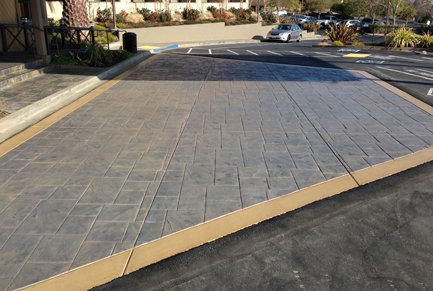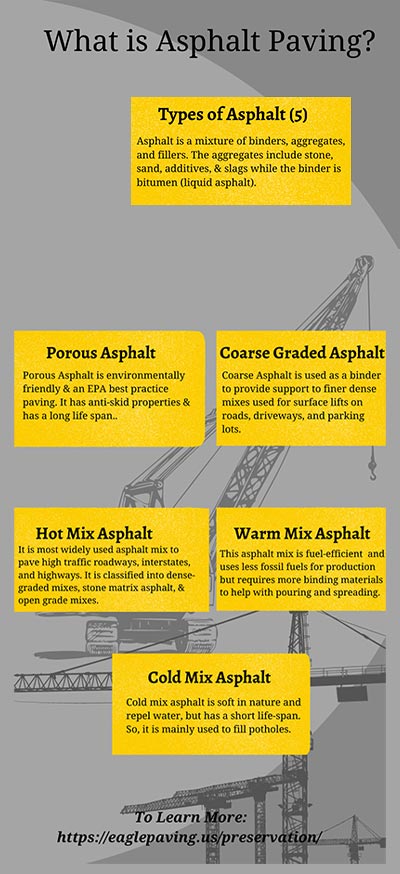The 5-Minute Rule for A1 Professional Asphalt & Sealing Llc
The 5-Minute Rule for A1 Professional Asphalt & Sealing Llc
Blog Article
The smart Trick of A1 Professional Asphalt & Sealing Llc That Nobody is Discussing
Table of ContentsIndicators on A1 Professional Asphalt & Sealing Llc You Should KnowThe Greatest Guide To A1 Professional Asphalt & Sealing LlcThe Single Strategy To Use For A1 Professional Asphalt & Sealing LlcThe A1 Professional Asphalt & Sealing Llc PDFsThe Basic Principles Of A1 Professional Asphalt & Sealing Llc

The oil in an auto engine is not just oil. The REOB contains all the ingredients that were in the waste oil as well as the wear metals from the engine (mostly iron and copper).
Nonetheless, by making numerous blends utilizing different REOB samples and various asphalt binders, the variants greatly can be averaged out. A number of States gave examples of known REOB composition to TFHRC scientists, that evaluated the samples to contrast the portion of added (known) REOB to the found (tested) amount. The evaluations showed a comparable portion of added and discovered REOB.
6 Simple Techniques For A1 Professional Asphalt & Sealing Llc
They got an overwhelming response. The TFHRC scientists assessed 1,532 samples from 40 States, one Canadian province, and 2 Federal Lands Highway departments. They examined each sample twiceamounting to even more than 3,000 evaluations. None of those States realized that the asphalt they were acquiring had REOB. One State insisted its examples had no REOB.
Of the 1,532 samples tested, 12 percent had REOB, and some contained significantly high degrees of it at 1020 percent. The highest degree was 34 percent in an example from Texas, which TxDOT had actually made use of in a patching compound. This testing likewise exposed the presence of phosphoric acid in 11 percent of the examples, and 2 percent contained ground tire rubber.
2 years back at TRB's yearly conference, the Federal researchers held an REOB workshop and provided the findings of their lab analyses to a standing room-only group. Although some companies do not specifically outlaw REOB, they do enforce physical tests that avert its useeffectively a restriction. diagonal parking vs straight parking. Others do not outlaw it by specification, but have agreements with asphalt vendors to avoid making use of REOB
All About A1 Professional Asphalt & Sealing Llc
A handful do allow REOB, some within certain limits. Ohio and Texas limit levels to less than 5 percent of the asphalt. To create a trusted test approach that all States can make use of, the TFHRC researchers established a round-robin test plan. The individuals are 11 State highway agencies (Illinois, Massachusetts, Minnesota, Mississippi, Montana, North Carolina, Oklahoma, South Carolina, Texas, Vermont, and Wyoming), 2 independent testing laboratories, the Ministry of Transportation in Ontario, Queen's University in Ontario, and an Ontario paving contractor.
The individuals are evaluating the samples independently making use of the standards supplied by the TFHRC researchers. The outcome will certainly be a proposed AASHTO examination approach that any kind of State can take on and make use of.
The pavement with REOB, which is situated 0.6 mile (1 kilometer) from the sidewalk without REOB, has identical subgrade, web traffic density, and climate. The section of Highway655 with 5 to 10 percent REOB revealed significant cracking. In this instance, the visibility of REOB was the identified root cause of breaking at a reduced temperature levels.
"In our experience in Canada, also little quantities of 23 percent can be a problem." Likewise, a section of test sidewalk in Minnesota (MN1-4) discovered to contain REOB likewise fractured too soon. The sidewalk done well for the first 3 to 4 years, yet then began to break. This pavement is additionally based on low temperatures.
The Ultimate Guide To A1 Professional Asphalt & Sealing Llc
The tests were not substantial, but they revealed that at levels of 6 percent or more, the tensile toughness of the asphalt dropped dramatically. At a degree of 3.5 percent REOB, the variant in the physical test techniques was more than the result of REOB. In reality, it was challenging for researchers to assess whether REOB was present.

One binder parameter thought about is the distinction between the reduced temperature level critical spec temperature level for tightness (S) in the bending beam rheometer and the flexing light beam rheometer creep slope (m-value) noted as Tcritical. TC = TC (S) TC (m-value). Assessment of this specification is still ongoing. Two independent research study teams, one from AASHTO and the other from the Asphalt Institute, wrapped up that more research is needed look at this site on making use of REOB in asphalt.
Previously, all asphalt testing measured design buildings such as tightness. These tests do not show what materials had been included to the asphalt. One example obtained during the TFHRC study had a very odd analysis. The example had the adhering to test results: Superpave PG 64-28 with a high temperature level grade of 67.3 Tcritical on the flexing light beam rheometer was 6.7 levels Celsius.

8 Simple Techniques For A1 Professional Asphalt & Sealing Llc
These results demonstrate there are weaknesses in the standard engineering testing protocols that might be made use of. The manufacturer might have a financial benefit and the product passes all the standard examinations, however the item may not be useful to ensuring long-term efficiency. To address this issue and the growth of new asphalt ingredients and extenders, TFHRC is starting a research program to use portable spectroscopic devices, x-ray fluorescence spectroscopy, and Fourier change infrared spectroscopy to enable analyses to be done in the field instead than needing to take samples back to the laboratory.
Report this page